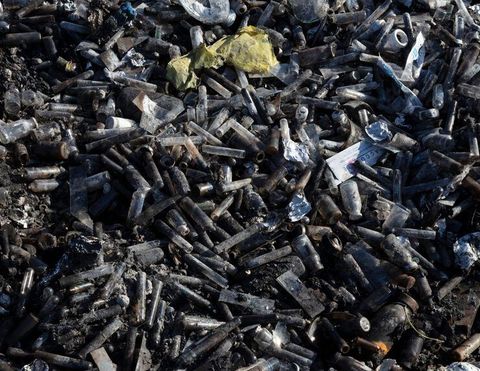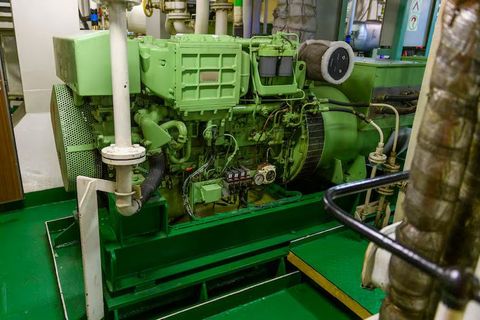Practical Tips for Selecting Valves That Improve Efficiency
Valves are essential components in mechanical systems, pipelines, and industrial machinery. Their main function is to regulate, direct, or control the flow of fluids such as gas, water, oil, or steam. From household plumbing to large-scale power plants, valves ensure safety, efficiency, and precision in operations.
The selection of the right valve type matters because every system has unique requirements based on flow rate, temperature, pressure, and the nature of the fluid being handled. With the wide variety of valves available — such as gate, ball, butterfly, and globe valves — understanding the basics helps industries and individuals make cost-effective and reliable choices.

Importance
Selecting the right valve has a direct impact on system efficiency, safety, and maintenance costs.
-
Energy Savings: Efficient valves minimize leakage and reduce energy losses, lowering operational costs.
-
Safety: Proper valves prevent accidents caused by pressure build-up or uncontrolled fluid release.
-
Operational Reliability: Correct valve types reduce downtime and enhance productivity in industries like oil and gas, water treatment, and manufacturing.
-
Longevity of Systems: Choosing a valve compatible with the material and fluid prevents corrosion and wear.
For businesses, the right valve choice improves profitability by ensuring consistent performance. For households, it prevents issues like water leaks, high bills, and equipment damage.
Recent Updates
Valve technology and industry practices have evolved in recent years to meet growing demands for efficiency and sustainability.
-
Smart Valves (2023–2024): Many industries are adopting valves with built-in sensors and IoT connectivity, enabling real-time monitoring and predictive maintenance.
-
Eco-Friendly Materials (2023): Manufacturers are using recyclable or low-carbon materials to meet sustainability goals.
-
Regulatory Emphasis (2024): Governments and industry bodies have updated standards for leak prevention, particularly in oil, gas, and chemical sectors.
-
Automation Integration: Automated valve systems, often controlled through SCADA (Supervisory Control and Data Acquisition), are now standard in power plants and large facilities.
These updates highlight how valve selection is no longer just about functionality — efficiency, compliance, and environmental considerations are now equally important.
Laws or Policies
Valve selection is influenced by regulations and policies that vary across industries and countries:
-
ASME (American Society of Mechanical Engineers) Standards: Widely used in industrial piping and pressure systems to ensure safety and reliability.
-
ISO (International Organization for Standardization): Provides global standards for valve design, testing, and performance.
-
EPA Regulations (U.S.): The Environmental Protection Agency enforces emission and leak prevention standards that affect valve materials and maintenance.
-
CE Marking (Europe): Valves sold in the European Union must comply with safety, health, and environmental protection directives.
-
Local Building Codes: For residential and commercial buildings, plumbing valves must align with municipal or national plumbing codes.
These regulations ensure that valves are safe, efficient, and environmentally responsible.
Tools and Resources
Several resources help engineers, technicians, and decision-makers choose the right valves:
-
Valve Sizing Calculators: Online tools provided by manufacturers such as Emerson and Flowserve.
-
Material Compatibility Charts: Available on engineering websites to check chemical resistance of valve materials.
-
Software Tools:
-
Pipe Flow Expert – Simulates fluid systems to test valve performance.
-
Engineering Toolbox – Offers flow and pressure loss calculators.
-
-
Industry Portals:
-
American Petroleum Institute (API) for oil and gas guidelines.
-
Water Environment Federation (WEF) for water treatment insights.
-
-
Training & Certifications: Online courses on valve selection and maintenance from ASME and ISA (International Society of Automation).
These tools simplify decision-making, especially in complex industrial systems.
Table: Common Valve Types and Their Primary Uses
| Valve Type | Function | Common Applications |
|---|---|---|
| Gate Valve | On/off control | Water supply, oil & gas |
| Ball Valve | Quick shut-off | Chemical plants, pipelines |
| Globe Valve | Flow regulation | HVAC systems, power plants |
| Butterfly Valve | Large flow control | Water distribution, wastewater |
| Check Valve | Prevents backflow | Pumps, wastewater systems |
| Pressure Relief Valve | Safety control | Boilers, compressed gas systems |
FAQs
What is the most commonly used valve in households?
Ball valves and gate valves are the most common in residential plumbing due to their durability and ease of operation.
How do I know which valve material to choose?
It depends on the fluid. Stainless steel is ideal for corrosive materials, brass for water systems, and PVC for low-pressure, non-corrosive applications.
What factors should I consider when selecting a valve?
Key factors include pressure rating, temperature range, flow characteristics, material compatibility, and maintenance needs.
Are smart valves worth the investment?
Yes, especially in industries. They improve monitoring, reduce leaks, and help save costs in the long term through predictive maintenance.
Do all valves need regular maintenance?
Yes, periodic inspections ensure valves operate safely and extend their lifespan, though the frequency depends on usage and environment.
Final Thoughts
Valves are small but critical components in both household systems and industrial operations. Choosing the right valve improves efficiency, safety, and cost management. With recent advances in smart technology and stricter environmental standards, valve selection is becoming more complex yet more rewarding.
By combining knowledge of valve types, regulatory requirements, and available tools, businesses and homeowners can make informed decisions that ensure both reliability and sustainability.





